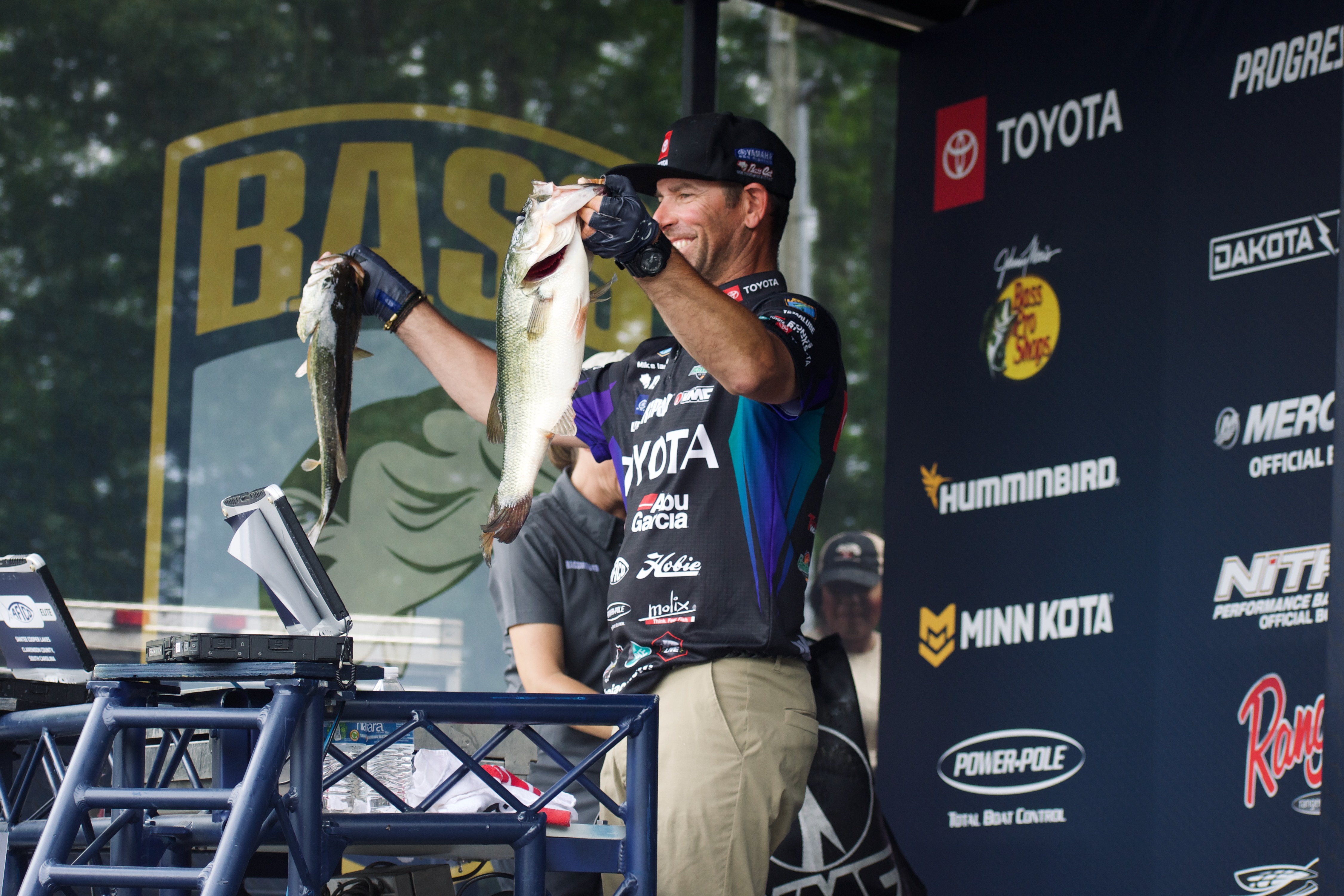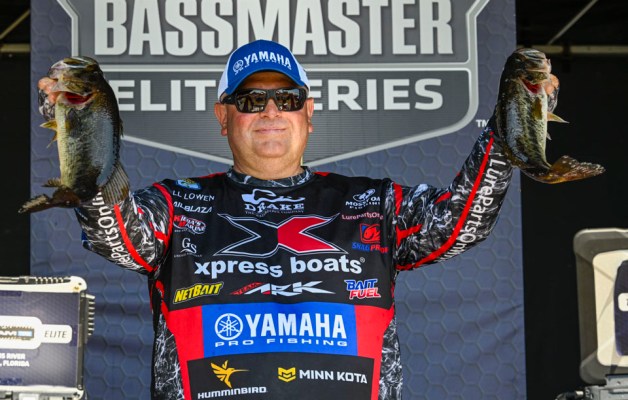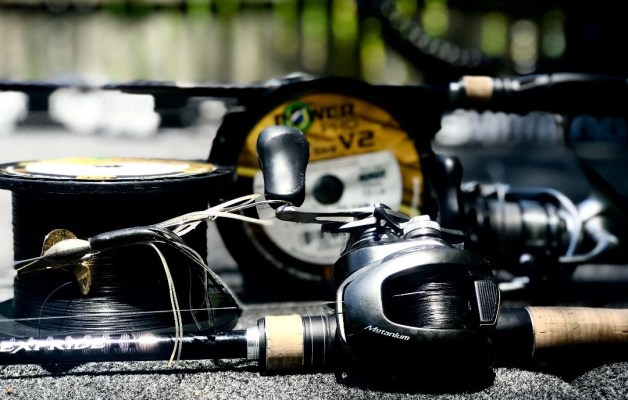
It’s hard to come up with a new lure that’s truly game changing, because so many innovative baits have been introduced in recent years. VMC has met that challenge with their new Swingin’ Ned Rig Jig.
I’ve been playing with this hybrid bait for about a year. It takes the proven Ned jig and makes it deadlier than ever. I call fishing with it “Ned swingin’.”
The Swingin’ Ned Rig has the same mushroom-style head and 90-degree line eye of a traditional Ned jig. What makes the Swingin’ Ned unique is its articulated, free-swinging hook.
With a traditional Ned rig, the bait stays as straight as a pencil. The Swingin’ Ned lets the bait move up, down, left and right. That subtle action makes the bait looks more lifelike.
Hook
The straight shank, No. 1 VMC Finesse Neko Hook is the real key to this bait. When you pin a bass with that hook, it stays buttoned. Two stiff fluorocarbon keepers hold the plastic bait firmly in place.
When I’m fishing something like a gravel bottom at Lake of the Ozarks or a rocky shoal on Lake Erie, I rig the hook exposed just as I do with a traditional Ned rig. The Swingin’ Ned also allows me to Texas rig my baits. That’s a huge advantage.
Now I can fish a Ned rig without snagging in places where the bass have never seen one before, such as standing timber, brush and thick grass. Whenever the jig contacts a branch or some other piece of cover, the plastic bait moves about and tempts a strike.
In most situations, I rig the Swingin’ Ned with a Berkley Powerbait Maxscent Lil’ General Worm, which was designed specifically for Ned rigging. Another productive bait for me is Berkley’s Powerbait Water Bug in both the 3.3- and 4-inch sizes.
Buoyant baits
The Water Bug has a forked tail, which gives it a little extra movement. It also floats. The hook on the Swingin’ Ned is so light that floating plastic baits stand up when you pause the retrieve. Floating baits can make the lightest traditional Ned jigs stand at rest. But with the heavier sizes, say 3/16 ounce on up, the bait lies flat on the bottom.
With the Swingin’ Ned, a floating bait always stands up regardless of the jig’s size. It comes in five weights, from 1/16 to 3/8 ounce.
Most guys only fish the lighter Ned jigs, but with the 1/4- and 3/8-ounce Swingin’ Neds I can fish deep water and in a heavy current. I needed the 3/8-ouncer to stay on the bottom when I fished strong flows in the Susquehanna River.
The Swingin’ Ned is available in black, green pumpkin and bright chartreuse. I’ve had a lot of success this year with smallmouth using the chartreuse color. Smallmouth are sight feeders, and I think they can see chartreuse from a long way off.
The basic retrieve
I fish the Swingin’ Ned pretty much the same way I do with a traditional Ned rig. I always cast past the fish. I don’t want it dropping right on their heads. Once it hits bottom, I angle the rod roughly 45-degrees across my body and slowly pull it from about 3 o’clock to 12 o’clock.
I stop immediately whenever I feel the jig hit something. That’s when that articulating hook makes a big difference. It lets the bait float or move about instead of being stagnant as with a traditional Ned rig. The bite comes after I start moving the bait again, nine times out of 10.
I use the same tackle for the Swingin’ Ned that I do with a regular Ned rig. I like a 6-foot, 6-inch to 7-foot medium action spinning rod with a 2000 to 3000 size reel filled with Berkley’s crystal X5 braided line. I tie it to an 8-pound Berkley 100% Fluorocarbon leader most of the time.
However, when I’m fishing in a heavy current, I go with straight fluorocarbon. On the Upper Susquehanna, my braid acted like a parachute in the current and prevented the Swingin’ Ned from getting to the bottom. I was able to get it down effectively with straight fluorocarbon.
Ned swingin’ also shows the bass something they haven’t seen before. I think a lot of guys are going to be switching from a traditional Ned jig to a Swingin’ Ned.





